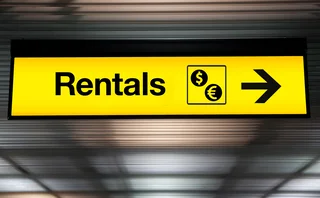
Corporates’ tech stacks face pressure from rising FX volatility
Treasurers and CFOs are worried about how their FX tech will cope with a potential increase in hedging activity
Speaking with foreign exchange traders, one of the biggest talking points this year has been how, amid interest rate volatility hitting record levels on the back of central bank movements, FX volatility has remained muted.
Traders put it down to the co-ordinated nature of the rate movements – carry trade or relative value opportunities don’t open up if central banks are all raising rates simultaneously. But with pauses now starting to emerge in different countries, and the US dollar showing strength, things are changing.
Three-month at-the-money euro/US dollar options, for instance, started the year at 8.76 vols, and fell to a low of around 6.29 on June 9, according to Bloomberg data. But this has since picked up to hit 7.52 as of October 9.
For FX options trading desks, this is great news – as they may remember from the years immediately preceding Covid, making money in low-vol environments isn’t easy. But for corporates, higher FX volatility is not generally a cause for celebration, given the impact it can have on earnings.
When volatility was at its peak in the second quarter of 2022, for example, US and European multinational corporates reported a record $47 billion in FX-related headwinds to their revenues, according to research from treasury technology firm Kyriba.
Corporates have largely responded over the past year by amending the types of hedging instrument they use, switching from long-dated forwards to locking in rates of six months or less, with the average hedge being five-and-a-half months, according to a survey of North American corporate chief financial officers (CFOs) conducted by MillTechFX in May. Many have been able to make greater use of options to secure these rates at a cheaper premium.
CFOs are also hedging a greater amount of their exposure to increase their protection, with 79% of corporates citing an increase in their hedge ratios compared with last year, according to the survey.
But the survey reveals that CFOs are worried about how their tech stacks will cope with this increase in hedging activity. It showed that nearly a third of CFOs believe their FX stack is below average, with many citing difficulties in forecasting exposures, calculating the cost of execution and benchmarking providers as their main operational challenges.
Corporates that are somewhat behind in their tech journey can also rely heavily on manual price-discovery processes, which can involve multiple calls, emails or online platforms that must be logged into to compare quotes from dealers.
Some are looking to change this state of affairs, though, and the collection and use of risk management analytics is becoming an important focus for treasurers. For example, having better data on a corporate’s cash position and forecasting of required cash payments in the future could give them a better view of what and when to hedge.
Dealers with large FX corporate franchises are being called upon to digitise these processes and develop a range of tools such as carry monitoring and currency risk scorecards that can help treasurers make decisions on their FX programmes.
Some banks are also breaking down silos within their own internal systems so that corporates can access a single platform across FX and treasury management.
Banks that can provide greater tech-driven solutions may then be awarded more business, which in turn gives axes and potentially offsetting flows for the broader trading franchise.
At a time when institutional flows are down year-on-year, this could become even more important.
Only users who have a paid subscription or are part of a corporate subscription are able to print or copy content.
To access these options, along with all other subscription benefits, please contact customer services - www.fx-markets.com/static/contact-us, or view our subscription options here: https://subscriptions.fx-markets.com/subscribe
You are currently unable to print this content. Please contact customer services - www.fx-markets.com/static/contact-us to find out more.
You are currently unable to copy this content. Please contact info@fx-markets.com to find out more.
Copyright Infopro Digital Limited. All rights reserved.
As outlined in our terms and conditions, https://www.infopro-digital.com/terms-and-conditions/subscriptions/ (point 2.4), printing is limited to a single copy.
If you would like to purchase additional rights please email info@fx-markets.com
Copyright Infopro Digital Limited. All rights reserved.
You may share this content using our article tools. As outlined in our terms and conditions, https://www.infopro-digital.com/terms-and-conditions/subscriptions/ (clause 2.4), an Authorised User may only make one copy of the materials for their own personal use. You must also comply with the restrictions in clause 2.5.
If you would like to purchase additional rights please email info@fx-markets.com
More on Our take
FX traders revel in March Madness
Chaotic Trump policies finally bring diversity to flows – to the delight of market-makers
Could LPs explore renting out their client franchise?
Connecting regional banks with sophisticated clients may see dealers evolve to become liquidity distribution hubs
Higher rates see corporates reassess FX structured products
Treasurers are getting a taste for dual currency notes and structured forwards
Quants dive into FX fixing windows debate
Longer fixing windows benefit clients, but predicting how dealers will respond is tough
Low FX vol regime fuels exotics expansion
Interest is growing in the products as a way to squeeze juice out of a flat market
BofA quants propose new model for when to hold, when to sell
Closed-form formula helps market-makers optimise exit strategies
FX forwards dealers face added challenges in P&L analysis
Mark-out tools for forwards and swaps trading may not be a panacea
What T+1 risk? Dealers shake off FX concerns
Predictions of increased settlement risk and later-in-the-day trading have yet to materialise








